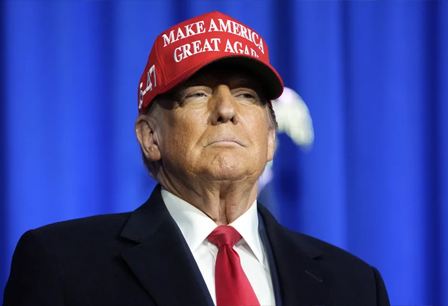Voters unhappy over soaring prices, including runaway housing costs, helped put Donald Trump back in the White House. But what will a second Trump presidency mean for the real-estate industry, and home buyers and sellers?
It means higher mortgage rates in the immediate term, but further down the line, another Trump administration could also mean less regulation and more tax incentives across the board, experts told MarketWatch.
“There’s likely to be two sides of the coin,” Mike Fratantoni, chief economist at the Mortgage Bankers Association, a trade group, told MarketWatch.
Though Trump’s policies could lead to more tax perks and lighter regulation that could help home buyers and builders, Fratantoni explained, his policies could also trigger a bigger federal deficit, which could push up mortgage rates.
Here are the six key points to watch out for in the coming months:
1. Higher mortgage rates
Expect mortgage rates to remain elevated in the aftermath of the election. The 30-year mortgage rate averaged 7.13% as of Nov. 6, according to Mortgage News Daily.
“Overnight, we’ve seen the 10-year Treasury rate up about 20 basis points,” Fratantoni said, “so you could reasonably expect that it is going to translate pretty closely to a similar increase in mortgage rates.”
Mortgage rates tend to rise and fall in tandem with the 10-year Treasury note BX:TMUBMUSD10Y, rather than following the Federal Reserve’s benchmark interest rate. The 10-year Treasury note has risen sharply over the past few weeks, in anticipation of a Trump victory, pulling up the 30-year mortgage rate along with it. Treasury yields typically go up when investors expect inflation to increase.
With the Trump administration, expect a higher level of growth in the U.S. economy, higher inflation, and hence, a higher interest rate, Fratantoni said.
The volatility is expected. When Trump was last elected in 2016, mortgage rates also went up, Danielle Hale, chief economist at Realtor.com, told MarketWatch.
Realtor.com is operated by News Corp subsidiary Move Inc., and MarketWatch is a unit of Dow Jones, which is also a subsidiary of News Corp.
Between Nov. 5, 2020 and Nov. 12, 2020, the 30-year mortgage rate increased from 2.78% to 2.84%, before dropping again the following week to 2.72%, based on Freddie Mac data.
But the longer-term outlook for home buyers is bleak, Lisa Sturtevant, chief economist at Bright MLS, said in a statement.
In the near term, “we should expect more volatility in the housing market,” Sturtevant said. But over the longer term, expect homeownership to be “harder to attain for first-time and moderate-income home buyers,” she added, “as his policies favor high-income individuals and existing homeowners.”
Several of Trump’s plans — from imposing tariffs on imported goods to cracking down on immigration — could lead to higher mortgage rates through the end of this year, the experts noted. But one particular pain point is the outstanding issue of the federal deficit, which has an impact on mortgage rates.
Because mortgage rates follow the direction of the yield on the 10-year Treasury, higher federal borrowing costs for the government’s debt in the future could in turn lead to higher mortgage rates for buyers, according to the Bipartisan Policy Center.
To that end, “bond yields are rising because investors expect Trump’s proposed fiscal policies to widen the federal deficit and reverse progress on inflation,” Sturtevant said.
Therefore, expect Trump’s silence on the federal deficit to push up rates, Lawrence Yun, chief economist at the National Association of Realtors, told MarketWatch. “In the short term, mortgage rates will tick higher as the budget deficit outlook does not improve, even as the Fed is cutting its short-term interest rates.”
Unless Trump’s actions lead to inflationary pressures subsiding, the Fed will not make deeper interest-rate cuts, which will keep mortgage rates high, Yun explained.












